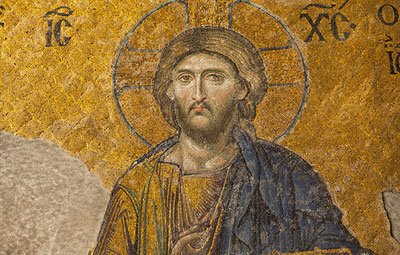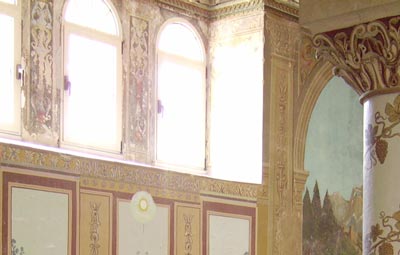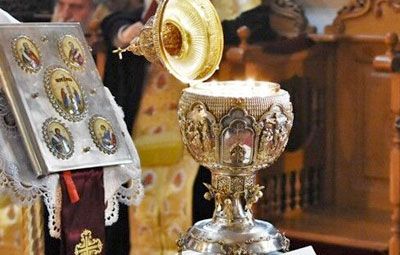Jerusalem as Devotional Centre
References to the holy city of Jerusalem in the Old Testament include the names: Jerusalem, Zion, the City of David, the City of God, Salem which denotes peace, Jebush from the word that denotes the first inhabitant of the city, Kadytis, Aelia Capitolina, the Holy City etc. The name Jerusalem prevailed during the reign of king David, to signify “the city of peace”. This is where Christianity throve in the 4th c., with innumerable Christian churches decorated by St Helena and St Constantine. This holy city, of a history of more than 3000 years, is today a religious centre and centre of veneration for the three monotheistic religions: Christianity, centred around the Church of the Resurrection; Judaism with the Wailing Wall, and Islam with the mosques of Umar and Al-Aqsa.
Jerusalem is divided into the new and the old city. The old city is surrounded by the walls erected by Sultan Suleiman “Kanuni” in 1542 AD. The cold city communicates with the new city by means of eight gates:
- The Gate of David or Jaffa Gate. It stands to the west of the city. There is, at the gate, a tower built by the Crusaders, upon which the Muslims have added a minaret. According to tradition, this is also the site of David’s palace.
- The New Gate towards the northern part of the wall.
- The Holy Zion Gate on Mount Zion.
- Damascus Gate in the west part of the walls.
- Herod’s Gate to the northwest of the walls.
- The Gate of Gethsemane or St Stephen’s or Lion’s Gate. It stands to the east of the walls, opposite the Mount of Olives. At a short distance from the gate, the Protomartyr Stephen was stoned to death. It is called the “Lion’s Gate” after the pair of lions flanking the portal.
- The Africans’ Gate, in the south part of the walls.
- The Golden Gate. The most ancient of the gates, it stands to the east of the city. This is the gate Christ had passed through on a donkey whilst entering Jerusalem. In 629 AD, the Emperor Heraclius also passed through the Golden Gate, carrying the Holy Cross that had been stolen by the Persians during the raids. The gate would then close only to open once a year, on Palm Sunday, as the Patriarch passed through it in commemoration of Christ’s entry into Jerusalem. Umar Khattab would subsequently close the gate for reasons of city safety but also because he considered it redundant. According to tradition, the gate will reopen only with Christ’s Second Coming. Today, being closed, it is called the Gate of Repentance on the outside and the Gate of Mercy on the inside.
The Old City includes the Christian, Armenian, Muslim and Jewish quarters.









